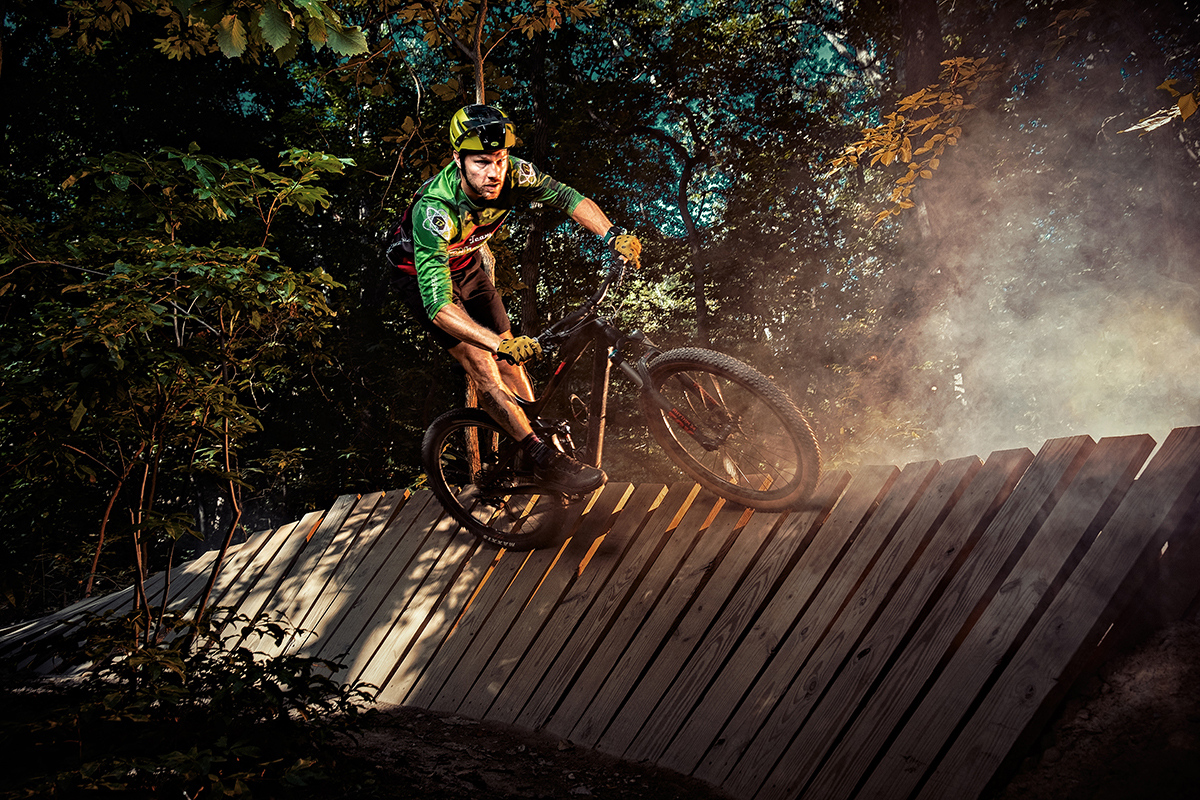Environmental Portraits to the Extreme
Tamron’s 17-70mm F/2.8 VC RXD zoom helps Jonathan Thorpe capture the action and emotion.
Share the article:
More Photo Tips | Video Gallery | Photo Gallery | Enewsletter sign-up
By Jenn Gidman
Images by Jonathan Thorpe
About two years ago, Jonathan Thorpe switched over to a Fujifilm APS-C mirrorless camera system, and since then he’s been adapting his Tamron lenses to his new workflow. When he picked up the Tamron 17-70mm F/2.8 VC RXD for Fujifilm X-mount, he knew he’d found the ideal lens for his environmental portraits. “The zoom range on the 17-70 is so versatile, and it works just like a native lens would on my camera bodies,” he says. “The autofocus is so quick and accurate, and its light weight and compact size are perfect for when I’m shooting video on a gimbal.”
Jonathan recently tested out the 17-70 during two different sports shoots: one of an extreme dirt-bike rider, and the other of boxers at a local gym. “I wanted to try this lens out taking tighter portraits of the athletes, as well as going wider to capture more of their environment for context, without a super-distorted view,” he says. “That’s important when you’re photographing an athlete. Being able to zoom in and out like that is very handy on shoots like these, especially for the bike shoot, where there was a lot of dust kicking up. I didn’t want to have to keep switching lenses in those circumstances.”
Having a fast lens like the 17-70 for these types of portraits is also key. “You need continuous autofocus that’s going to track with your subject easily,” Jonathan says. “If your lens motor can’t keep up with what your camera body’s seeing, then it all falls apart. The 17-70’s RXD motor ensures I’m getting accurate, high-speed autofocus. For the bike shoot, I would track with the rider all the way up the trail, and the focus stayed on his eyeball the whole time.”
The 17-70’s Vibration Compensation (VC) feature helps minimize camera shake when Jonathan is shooting handheld, and the F/2.8 maximum aperture throughout the entire zoom range ensures he’s able to shoot in nearly every lighting situation. “My goal is to make everything as sharp as possible,” he says. “The sweet spot for me is typically F/4, which offers me just enough separation while still keeping everything looking believable.”
For both the trail shoot and boxing photos, Jonathan used between two and four strobes, plus a fog machine for added ambiance. “Especially in the boxing ring, I wanted the lighting to be dramatic, for those quintessential images of tough-looking fighters,” he says.
JONATHAN’S QUICK TIPS
• Research your location.
No matter where you’re taking an environmental portrait, it’s important to know as much as you can beforehand about the terrain, lighting, and anything else you can suss out. That way, on the day of the shoot, you already know what you’re contending with, especially if it’s a venue or location you’re not used to shooting in. On the day before the bike shoot, I headed up to the trail and spent about an hour taking test shots and giving the 17-70 a dry run. I had all my angles set by the time the shoot arrived, so I was able to concentrate more fully on the talent and bringing my vision to fruition. I consider it akin to the prep work you do before painting a room—the more you take care of ahead of time, the better that paint’s going to stick.
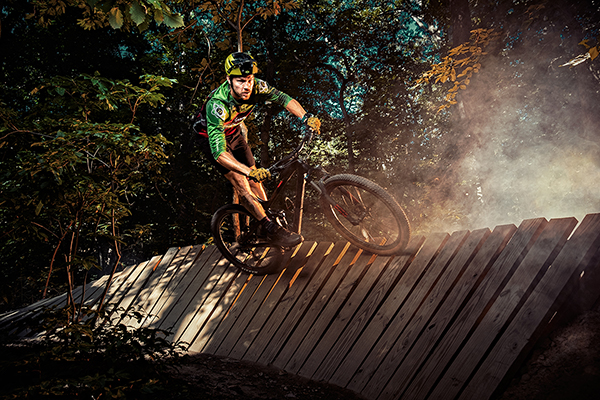
17-70mm (17mm), F/4, 1/160 sec., ISO 160
Click image to view larger
• Loosen your subjects up.
As the photographer, you have to acknowledge to your subject that you know being in front of a camera isn’t what they’re accustomed to doing. But you also want to minimize that discomfort and empower your subject by reminding them how hard they’ve trained in their sport and what level they’ve risen to thanks to that training. Let them know it’s OK that they’re going to be showing themselves off in front of the camera—that’s the confidence you want to highlight, because they’ve earned it. These are images they’re likely going to use in their portfolio or on their websites, so they want to photograph as the best, most authentic versions of themselves.
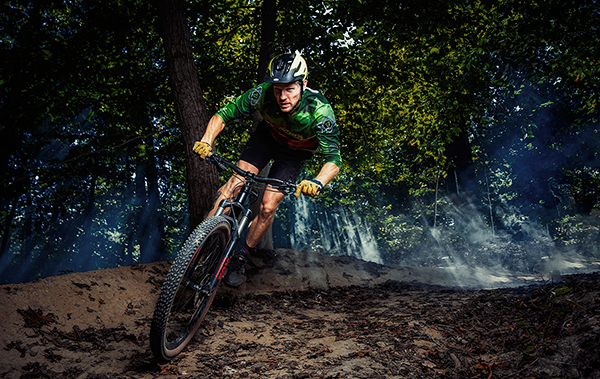
17-70mm (17mm), F/4, 1/200 sec., ISO 160
Click image to view larger
• Concentrate on facial expressions.
When photographing athletes, you assume a role that’s less photographer and more director. Athletes are obviously good at what they do in their sport, but conveying the emotion I’m looking for often doesn’t come naturally when there’s a camera in front of their faces. They may be going through the motions for me, but I don’t want to just see the motions—I want to see their determination and their focus. So I’ll sometimes offer a little extra instruction and ask them to dial up the emotion so they aren’t showing a “dead” face in the photos. I have them first show me what they’re going to do, then have them repeat that motion but while really feeling it in their mind. The expressions that come out of that are what’s going to help sell the image.
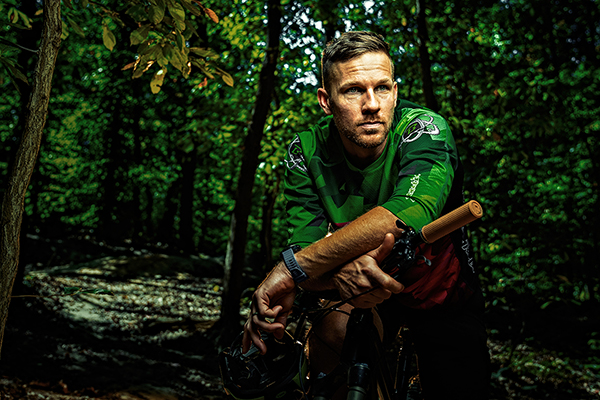
17-70mm (28mm), F/2.8, 1/640 sec., ISO 125
Click image to view larger
• Show off the athletes’ power.
I’m big on the hero shot, which is where I get low to the ground and shoot up at my subject. Part of that is because I’m 6-foot-4 and usually looking down at people—positioning myself lower offers me a different perspective than I’m used to seeing. But also, that angle helps make the athlete look larger than life, which is especially important when you’re taking pictures of boxers and, say, mixed martial arts fighters.
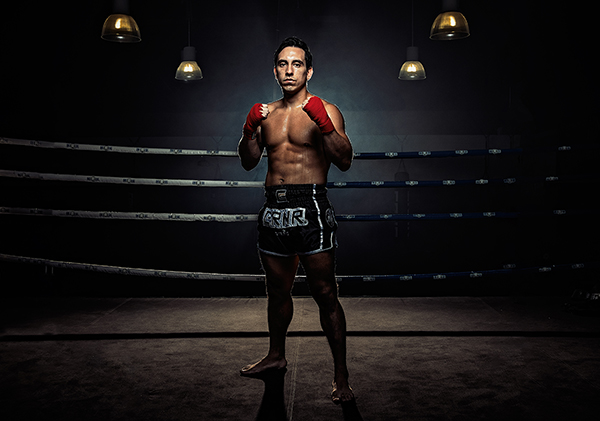
17-70mm (20mm), F/5, 1/250 sec., ISO 100
Click image to view larger
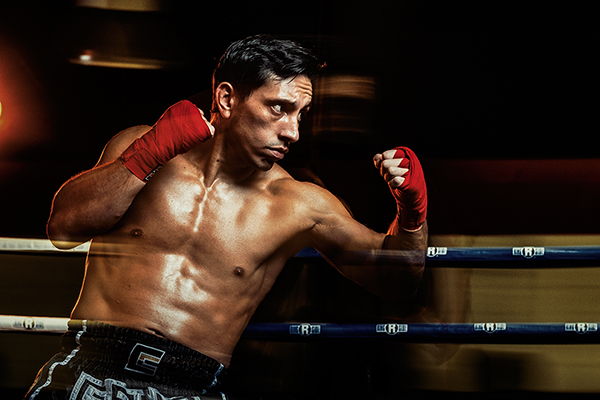
17-70mm (63mm), F/5, 1/8 sec., ISO 400
Click image to view larger
That goes for the female athletes I photograph, too. I want my photos of them to be about power, strength, and attitude. I’ll sometimes see pictures of female athletes that look oversexualized, and that’s not how I want to show my subjects. I have no problem accentuating their muscles and physique, but in a way that’s celebrating their athletic prowess and all the work they’ve put in to their craft.
• Take advantage of the wide end of the 17-70mm.
I love wide-angle environmental portraits. If you’re taking a photo of someone in their environment, there's a reason you're in that environment—so show it. I try to use my lighting so that it highlights my subject and they don’t get lost within that environment, but it’s important that the environment becomes an integral part of the narrative.
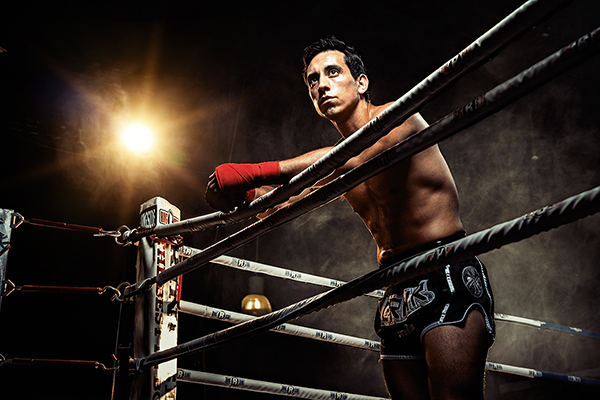
17-70mm (30mm), F/4, 1/250 sec., ISO 100
Click image to view larger
In my image here of the female boxer, shooting at 17mm allowed me to show her warming up, as well as the ropes of the boxing ring. It feels like you’re sneaking a peek in through the window to watch an athlete train. Using the wider end of the lens allows you to not only show the athlete, but also to tell a story—in this case, you feel like you’re witnessing her training all by herself, putting in those extra hours early in the morning or late at night. You’re not only seeing the work she’s putting in, you’re feeling it, too.
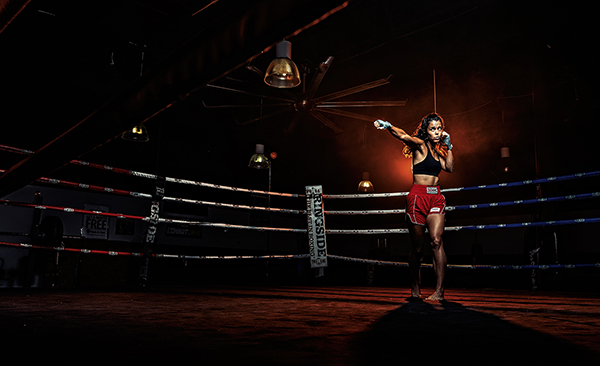
17-70mm (17mm), F/5, 1/250 sec., ISO 100
Click image to view larger
To see more of Jonathan Thorpe’s work, check out his website and Instagram.
More Photo Tips | Watch Videos | Learn More About Tamron Lenses | Photo Gallery
